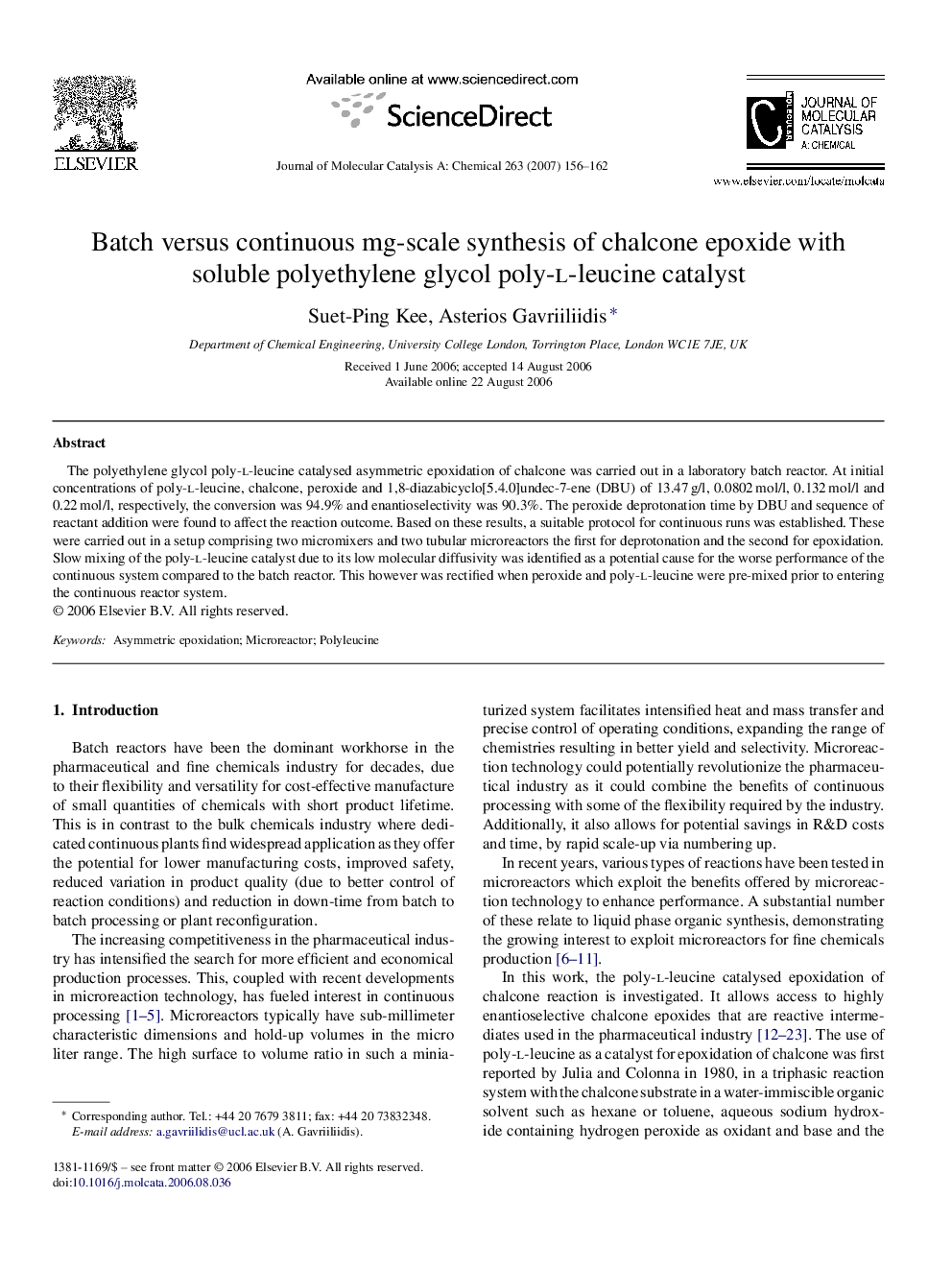| کد مقاله | کد نشریه | سال انتشار | مقاله انگلیسی | نسخه تمام متن |
|---|---|---|---|---|
| 68392 | 48513 | 2007 | 7 صفحه PDF | دانلود رایگان |

The polyethylene glycol poly-l-leucine catalysed asymmetric epoxidation of chalcone was carried out in a laboratory batch reactor. At initial concentrations of poly-l-leucine, chalcone, peroxide and 1,8-diazabicyclo[5.4.0]undec-7-ene (DBU) of 13.47 g/l, 0.0802 mol/l, 0.132 mol/l and 0.22 mol/l, respectively, the conversion was 94.9% and enantioselectivity was 90.3%. The peroxide deprotonation time by DBU and sequence of reactant addition were found to affect the reaction outcome. Based on these results, a suitable protocol for continuous runs was established. These were carried out in a setup comprising two micromixers and two tubular microreactors the first for deprotonation and the second for epoxidation. Slow mixing of the poly-l-leucine catalyst due to its low molecular diffusivity was identified as a potential cause for the worse performance of the continuous system compared to the batch reactor. This however was rectified when peroxide and poly-l-leucine were pre-mixed prior to entering the continuous reactor system.
Figure optionsDownload as PowerPoint slide
Journal: Journal of Molecular Catalysis A: Chemical - Volume 263, Issues 1–2, 14 February 2007, Pages 156–162